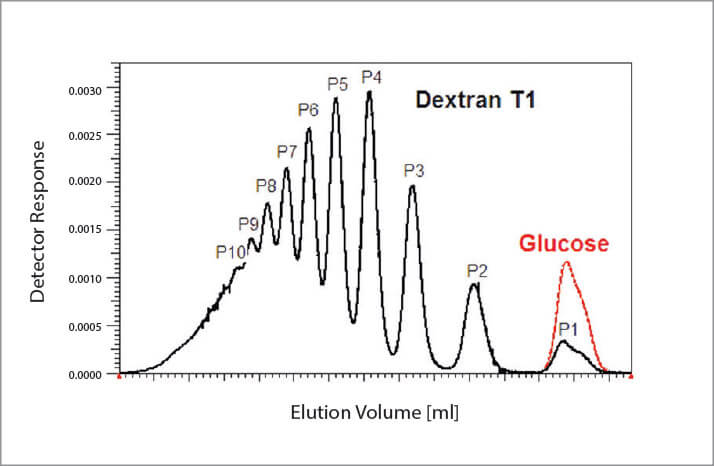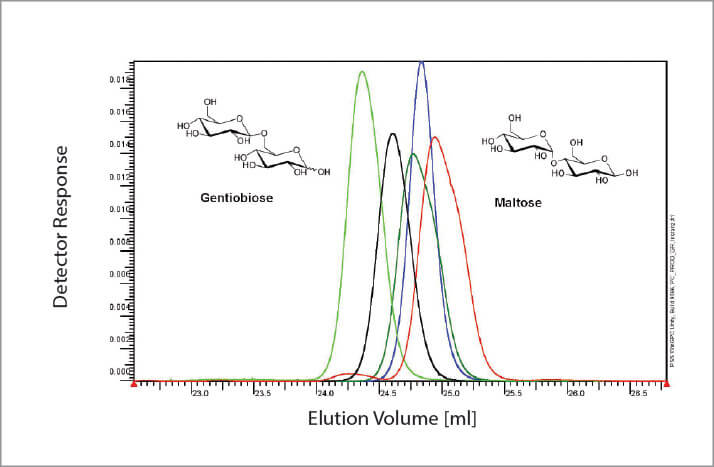Polysaccharides are very important in nature, occurring in food (starches in rice, wheat etc.) and plants (cellulose). Some polysaccharides are also produced commercially e.g. Dextrans, which are manufactured through the fermentation of sugar solutions. These are higher molar mass polysaccharides.
Dextrans are used in clinical and technical applications, where molecular weight is critical in determining the properties of the final product. Accurate determination of the molecular weight distribution is vital.
On the other hand, low molar mass saccharides are also very common and can be found in food, such as fruits, honey and sweets. Examples for low molar mass sugars are mono- (glucose, fructose), di- (lactose, isomaltose, trehalose) and trisaccharides (maltotriose, isomaltotriose). The separation and identification of low molar mass polysaccharides is a challenge as the compounds have the same chemical formula and only small differences in structure, e.g disaccharides maltose, isomaltose, gentiobiose cellobiose and trehalose C12H22O11.
A high resolution and therefore a good separation on the column is necessary for precise analysis. This is particularly important when new analytical LC coupling methods like GPC/SEC-ESI-MS are used, as the MS detector requires the columns to have a much higher resolution power within an overall smaller column volume. The new SUPREMA column, with a reduced particle size of 5µm, offers a significant improvement in performance compared to traditional 10µm materials and provides outstanding additional resolution, especially in the low molecular weight area, which is a major consideration when analyzing oligomeric polysaccharides. The analysis of dextran T1 shows the separation power when a combination of three SUPREMA 5µm 100Å columns is used. The oligomers in the low molecular weight are able to be resolved up to P10. A glucose separation is overlaid, as a reference. The analysis of different disaccharides shows the ability to separate compounds with the same chemical formula and with only small differences in structure and hence size in solution. PSS SUPREMA 5 µm columns can be used for numerous neutral and anionic aqueous applications in the molecular weight area between 100 Da to around 5 million Da. The columns are available in analytical (ID: 8mm) and micro (ID: 4.6mm) dimensions with different porosities. Linear or mixed columns are also available.








